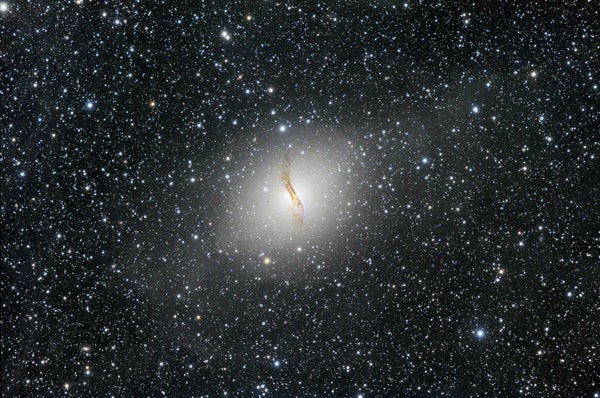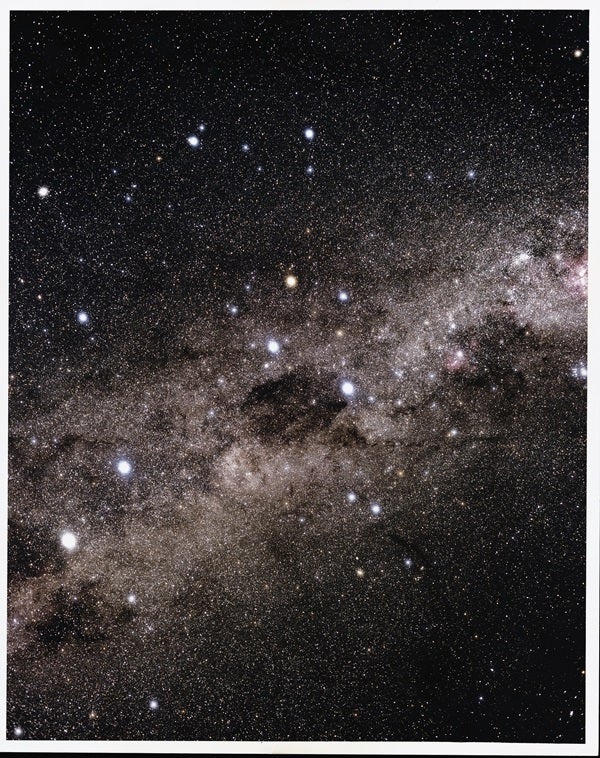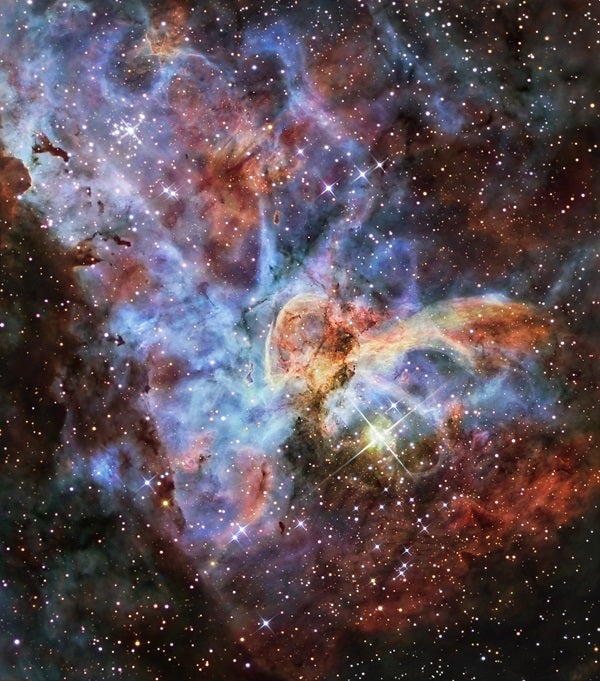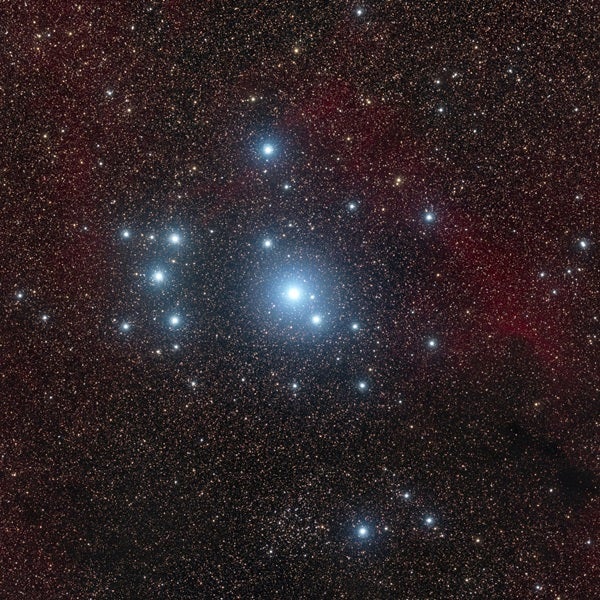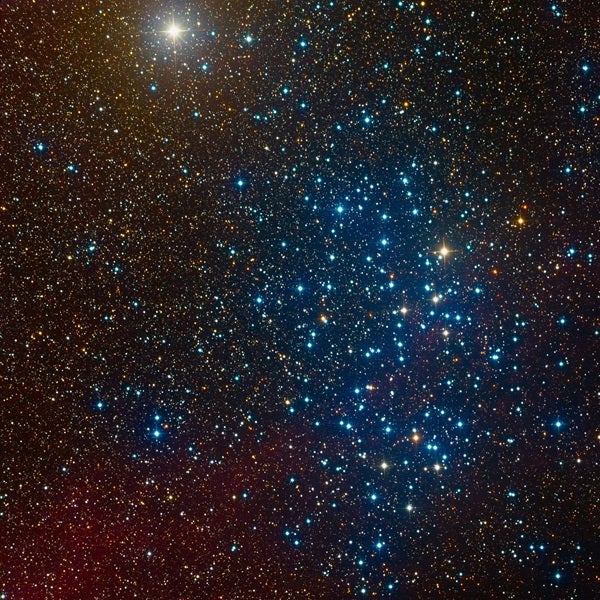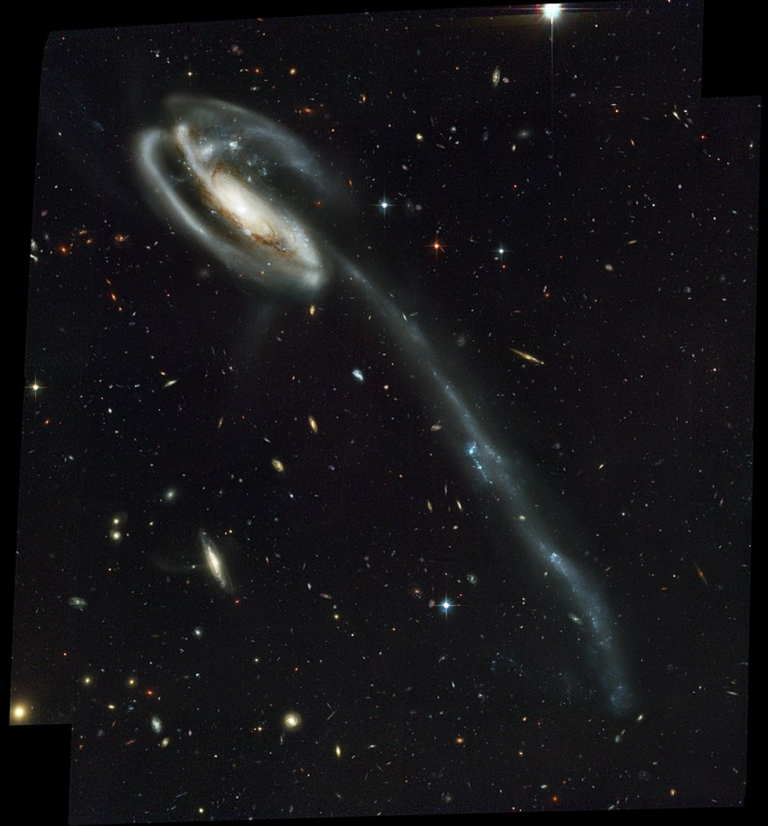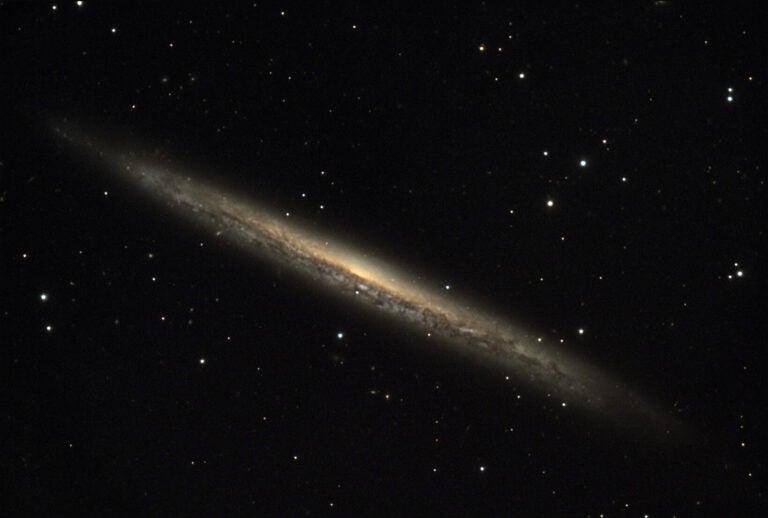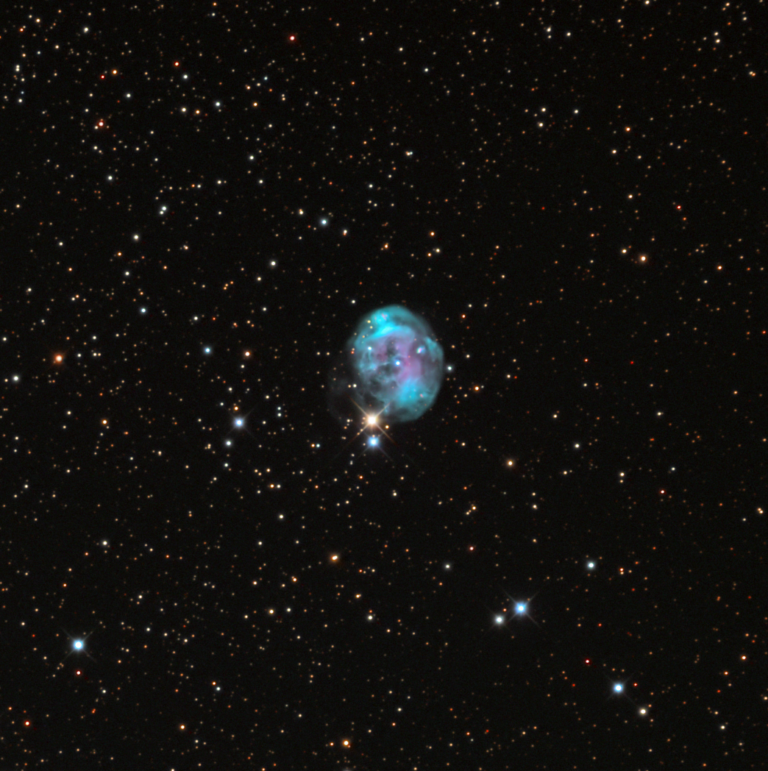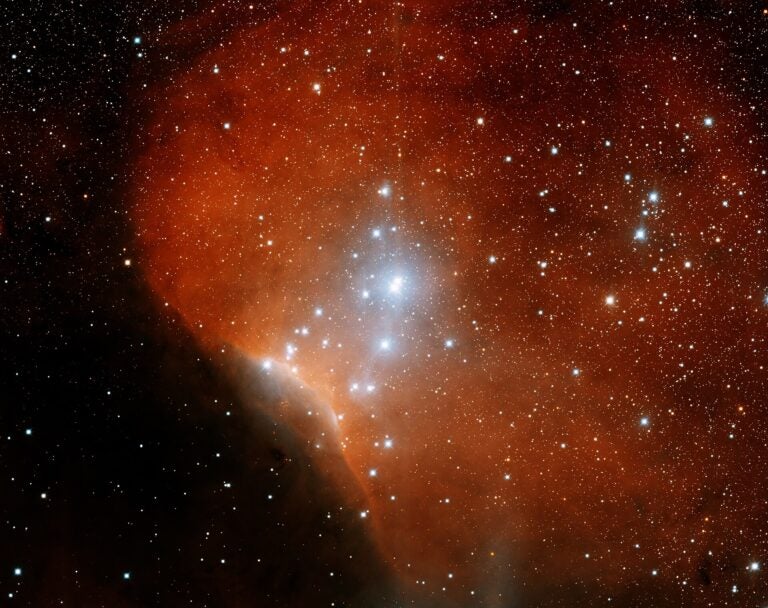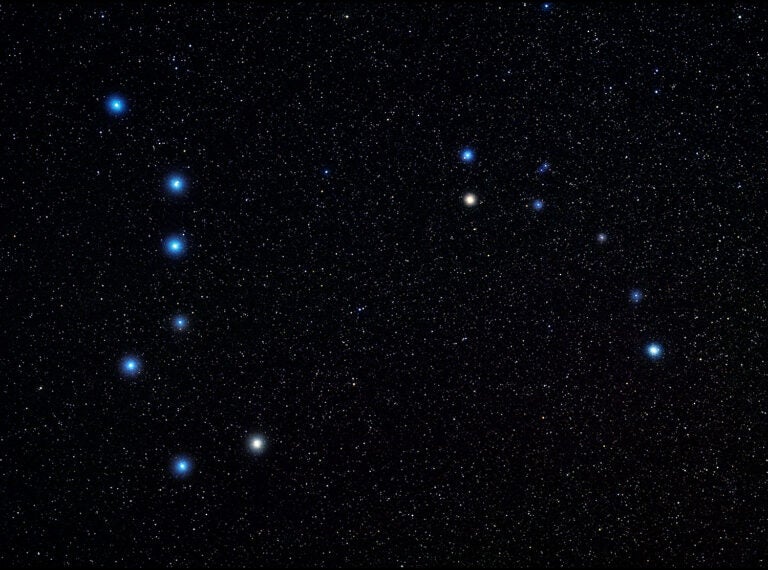Bart and Priscilla really became masters of the Milky Way, understanding our galaxy better than anyone else at the time, and wrote their famous book The Milky Way, which went through five editions, beginning in 1941. My inscribed copy of the book is a prized possession. In the late 1970s and early 1980s, when you would talk to Bart about deep-sky observing, he would periodically interject, with a twinkle in his eye, “Just remember that all the good stuff is in the southern sky.”

Bringing the universe to your door. We’re excited to announce Astronomy magazine’s new Space and Beyond subscription box – a quarterly adventure, curated with an astronomy-themed collection in every box. Learn More >>.
Centerpiece of the deep southern sky, Crux the Southern Cross is visible at center in this wide-field image. Below and left of the cross are the bright stars Alpha (left) and Beta Centauri. Alpha and its red dwarf companion, Proxima Centauri, make up the closest star system to the Sun. The Carina Nebula edges into this image on the right.
His statement wasn’t terribly far off from reality. Despite the fact that only about 15 percent of the human population lives in the Southern Hemisphere, more than half of the brightest, largest, and most dazzling clusters, nebulae, and galaxies are in the southern sky. And so they can only be seen best, or at all, on a trip to the south. That conundrum has set up one of the great pilgrimages in amateur astronomy — traveling to the Southern Hemisphere at least once, or maybe a few times, in one’s observing life.
As it turns out, Astronomy magazine conducts regular trips for our readers, often to eclipses, but to other astronomical and historically interesting places. For the past two years, we’ve put on a southern sky observing trip to Costa Rica in partnership with our colleagues at TravelQuest International. It is a spectacular journey. Our last such venture took place in late February and early March 2019, and we will take a group of intrepid observers to Costa Rica again in early spring 2020. I’m the regular trip astronomer on these journeys, and so I can tell you about what a great experience it is to see the southern sky’s best objects and also to enjoy an amazing place.
What makes Costa Rica such an incredible base for southern stargazing? Our observing site is a large, magnificent plantation far from city lights that serves as a comfortable station. We are the only group on its 800 acres, are dedicated to stargazing, and have comfortable lodge units of our own. The site rests on the Gulf of Nicoya, north of Punta Arenas, at a latitude of 10° N. This places us 15° farther south than the Florida Keys and situates us at a great latitude to see all of the magnificent treasures of the deep southern sky. Our ventures to the site of course coincide with the New Moon, giving us dark-sky gazing opportunities for nebulae and galaxies. And Costa Rica, in Central America, is easily reached for Americans — it’s only a two-and-a-half-hour flight from Miami, for example.
Next year’s foray into the Costa Rican wilderness, with stars glimmering overhead, will take place February 23–March 1. See the sidebar on page 51 for information on how to join us there.
What’s all this excitement and all of the bold statements about the southern sky about? I’ve been an observer for 40 years and have spent many thousands of hours at the eyepiece. But there’s something really special about seeing the Orion Nebula high in the sky, gleaming in all its glory. And then swinging your head around toward the south, in the same sky and at the same moment, and seeing the Carina Nebula, immensely larger and brighter. What an incredible thing! And all I need do for some to remind them of how special Crux the Southern Cross is to see, is to recall a certain song by Crosby, Stills, and Nash.
The late evening really cranks up the excitement. Now we have the mainline deep south rising. We can see the Southern Cross, the Carina Nebula, and many other objects in the area. There’s the Southern Pleiades (IC 2602) and its neighbor NGC 3532, two of the finest, largest open clusters in the sky. What about Alpha and Beta Centauri? How cool is it to look at Alpha Centauri in a telescope and know that it, along with its little companion Proxima, makes up the closest star system to the Sun, just 4.3 light-years away?
The early morning hours ratchet up the excitement even further, for those hardy enough to stay up really late. How about seeing Centaurus lead Scorpius and Sagittarius on a majestic rise, bringing the direction of the center of the galaxy far higher in the sky than you’ve ever seen? Centaurus itself hosts a long list of treasures, highlighted by the sky’s greatest globular cluster, Omega Centauri. A medium-size telescope will show its great ball of stars resolved so nicely that it brings to mind images of orbiting this cluster of a million suns. Nearby lies the spectacularly disturbed, interacting galaxy Centaurus A, one of the sky’s great treats. The list goes on and on.
Those are some of the reasons why our southern sky trips to Costa Rica are so special. I suggest that if you have never been to the Southern Hemisphere, this Costa Rican experience could change your astronomy life. I hope to see you there this coming spring, under the spectacle of the Milky Way as it arches overhead.
2020: JOIN US IN COSTA RICA!
Astronomy magazine’s editor, David Eicher, will lead an observing trip to Costa Rica February 23–March 1, 2020, in conjunction with TravelQuest International, the magazine’s tour partner. We invite you to come along and discover the incredible splendor of the deep southern sky.
For complete information on the tour, see www.astronomy.com/magazine/trips-tours.
On this unique trip, you’ll be able to join Dave to enjoy five nights of private, southern sky stargazing from the grounds of our exclusive Star Lodge. We will also experience daily morning and evening birding and nature walks with an expert guide.
On this trip, you can leave it all behind, with no TV, telephone, or in-room Wi-Fi. Enjoying the splendor of nature is what it’s all about.
The trip also features a special day excursion to a scarlet macaw sanctuary, a birding opportunity and boat tour through the Abangares River Mangrove, and the opportunity to view targets in the southern sky: the Southern Cross, the Carina Nebula, and Milky Way gems.

